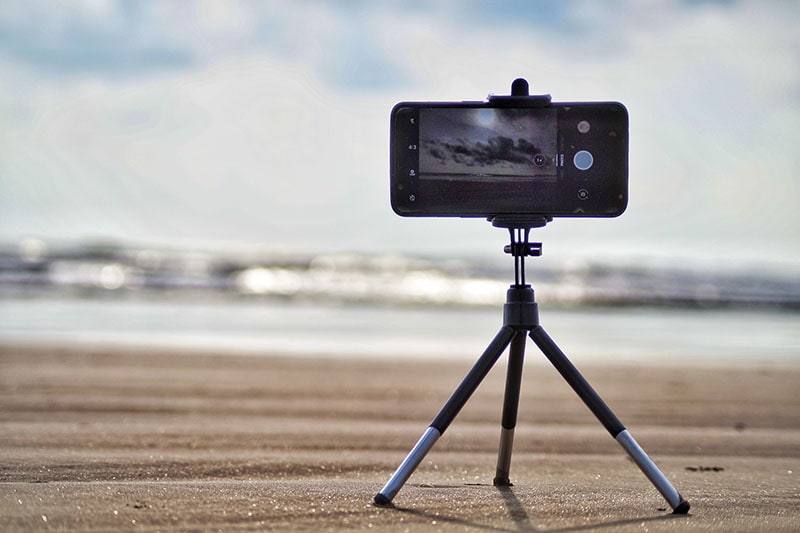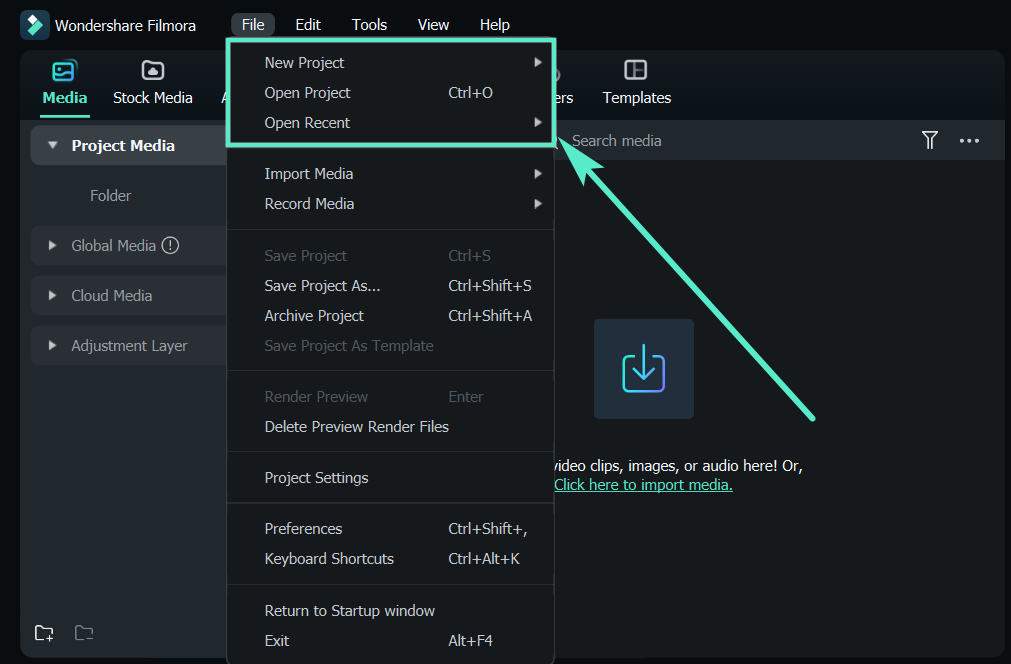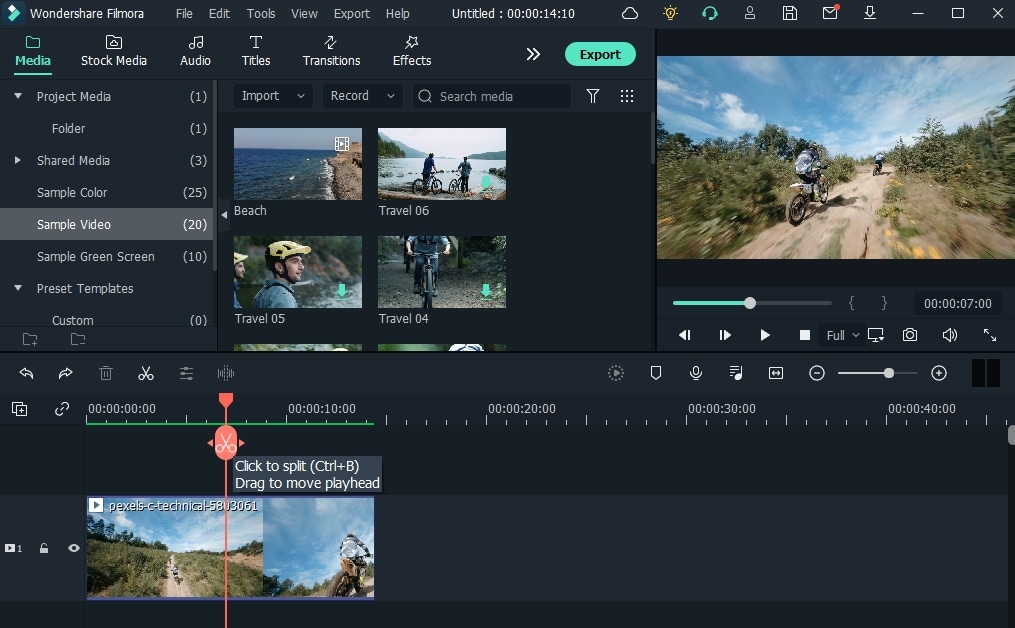The success of providing educational video content depends on its level of engagement. Even though a video contains all the necessary information and is clear and complete, the viewer may not find it engaging.

A captivating video keeps viewers interested, increasing the likelihood that whatever message you wish to get over will be remembered. What exactly is the formula for producing engaging instructional videos?
In this article
Part 1. A Media-first Strategy
You ought to approach subject learning somewhat differently than most others. Like you would with school or training, many instructional designers and video producers begin with the educational component and construct content around that.
Your primary goal as the video producer is to create engaging, thought-provoking, and educationally theoretical media.
Why did this strategy succeed so well?
People frequently assume that viewers compare their instructional content to the last educational video or course they viewed, which is a typical error. Consumers contrast it with other media, such as what they most recently saw on Netflix or YouTube.
For the best overall results, instructional designers and media developers should be included in the teams that are developing learning content.
What characteristics of the material make it compelling?
True, everyone responds to stuff differently. A video could be captivating to certain people. Some not as much.
But for your films to have the best chance of captivating your viewers, they must include these three essential components.
Content Format or Style
The first piece of advice is to make sure that the style and content are appropriate for the audience.
On the one hand, viewers will value a brief, concise video if they need a fast response to a query.
However, if users want to learn about spreadsheets, the content will need to be lengthier, more comprehensive, and divided into more videos.
To get this portion correctly, you should understand more about your intended audience. They, who? They are monitoring this, but why? What do they anticipate after watching the video?
You can better cater the content and style of your video to your audience's needs by becoming more aware of the context in which they are viewing it.
It requires compelling images and top-notch production.
The appearance of the video is the next crucial component. It should have intriguing, powerful images that don't detract from the content. You might employ graphics to draw attention to a critical learning point or switch up the camera viewpoint to keep viewers interested.
The belief that you need very expensive equipment or an entire studio to produce high-quality material is a common barrier that people encounter.
In actuality, skill matters more than tools or innate aptitude. Let's breakdown this as follows:
A compelling video needs to have:
- 90% skill
- 10% machinery or resources
- Talent: 0%
You might pick up some new information. Additionally, learning how to use the equipment effectively is significantly more crucial than understanding the type of equipment.
Modern cell phones can produce high-quality videos if you know how to use them. Even a $10,000 camera won't be able to save your footage if you don't learn the necessary abilities.
Introduce the Concept of a Story
If the format permits, the narrative should be a key component of your content.
Anybody can relate to a tale. Even highly technical YouTube tutorials employ stories to make their points. The report also introduces "stickiness," which encourages viewers to return for more.
Make sure your story "is appropriate for your audience and the objective of that particular video" when dealing with narrative.
People are more likely to retain the lesson if you can incorporate anecdotes into the learning process, making the video much more interesting to watch.
The Drawback of Utilizing Synthetic Voices
A screencast with a synthetic voiceover is a typical style of instructional video. Although this kind of film can be made more easily in various ways, you should be advised against using them.
These videos risk being "dehumanizing" and breaking the connection between your video and the viewer if they lack a presenter and a natural voice. Compared to seeing a video with an engaging presenter, it is considerably more challenging to relate to a robotic voice speaking through a screencast.
Part 2. Some Pointers for Producing Captivating Videos
Did you know that the age group of 25 to 34 years old watches the most online videos, accounting for 85% of all internet users in the United States? Videos draw viewers in, up their involvement, demonstrate the operation of your program or event, and foster trust by creating an emotional connection.
It's now effortless than ever to make a film on a smartphone, thanks to the readily available, inexpensive, and simple equipment. Learn the fundamentals of video production first, then add to your knowledge over time.
Start with a Narrative
Your video content should include personal narratives relating to a participant's real-life experiences, accomplishments, or failures. Videos with more intimate and relatable material tend to attract more viewers.
Utilize Participant Reviews
Testimonials from participants can engage audiences and assist potential registrants in understanding how they participate in your programs or events. Participant testimonials are a gateway to user engagement since they are the "human factor."

Plan to speak with the subject a day or two before the shoot. An initial interview or screening can glimpse someone's comfort and involvement level on the camera. An initial consultation can help you identify the "dramatic arc" or touch points crucial to capturing the essence of the story.
Tutorial Videos
An attention-grabbing method is to use a How-To video. People adore How-To videos, whether you're teaching them how to sketch a rocket, prepare pancakes, or warm up before a big race. The 2018 Video Marketing Statistics Report from WyzOwl found that 72% of people prefer to watch a video to learn more about a good or service.
Make an Explanation Video
Because people are impatient and seek immediate resolutions, Explainer videos are crucial components of your video content. Create a video to introduce your programs to users. Inform your users of the goals of your program or activity, your company's values, and the benefits of joining.
Think Long-Term
Make sure that your video staff is focused. Is the video an endorsement? A tutorial or explanation video? Decide who needs to participate and what you want the video to achieve. Whether you have a script, an outline, or a storyboard that has been roughed out, authenticity and engagement still require a plan.
Aim towards Your Predetermined Platform
Shooting in landscape (or horizontal) is recommended for social media videos. Landscape mode is visually appealing from the user's perspective because we watch videos on TV and in theaters.
Each social network, including Facebook, Instagram, Twitter, and Snapchat, has a unique user base.
Prepare videos for various channels. A video that plays on Facebook might not play on Instagram, for instance. Due to different time and format restrictions, you might need to approach your narrative differently on Snapchat or Twitter.
Keep it Brief
Generally speaking, shorter is preferable. Instagram has a 60-second restriction for videos, while Twitter has a 30-second cap. Instagram TV (IGTV) allows you to extend the length of your videos. Snap limits video length to 10 seconds.
Employ the Proper Tools
Lighting: Believing is seeing. By spending the time to illuminate the area properly, you may increase the visibility of your material. Online, there are a ton of inexpensive lighting solutions.

Tripods: Use a tripod instead of relying too much on your hand-held camera skills. A jerky video is annoying.

External Mics: Better audio will make your video appear more authentic. Look into stick mics and lav mics.
Video editing software is widely available these days and makes editing films of high-quality professionals simple.
Speaking of video software, you should use one suitable to your skills. Filmora is a terrific option for the majority of video editing experts as well as beginners because it hits the ideal mix between features and use.
Part 3. Create Compelling Brand Video Content using Filmora
Did you know 8 out of 10 individuals purchase after watching a brand video? You must be hoping for similar success with your brand video. However, you can't simply force the audience to watch any video!
- It must be both interesting and motivating.
- It must be inventive.
- It must have a magnetic element to draw in the viewers.
Additionally, it should successfully communicate the fundamental principles of your brand. It requires more than just pulling a camera and hitting the record button. A lot of effort goes into making a brand video. Still, the most crucial component is a top-notch video editor like Wondershare Filmora to polish it and add fun, entertainment, and innovation.

To begin with, it fulfills all of the requirements listed above. It highlights all of the capabilities of Filmora and is inventive, amusing, vivid, and enjoyable.
The film effectively illustrates to the audience how inventive they can be with Filmora by showcasing all the new effects, the AR sticker themes, and other video editing tools like speed ramping, masking, and the green screen effect.

But did you notice that they didn't present the characteristics in that manner? They employed all the basic and sophisticated video editing features to give us an idea of how it appears in use. And the video's clarity, substance, and flow all speak for themselves.
Anyway, that are just some tips for you on how to create compelling video content. Also, this article gives you a recommendation regarding video software you should use.
After all, the audience for your video content matters. If you make video content for learning, remember who will be watching it. Also, associate with them to be able to know what will be their feeling and thoughts when they watch your video. You can use this composition as your guide in creating one.



 100% Security Verified | No Subscription Required | No Malware
100% Security Verified | No Subscription Required | No Malware

